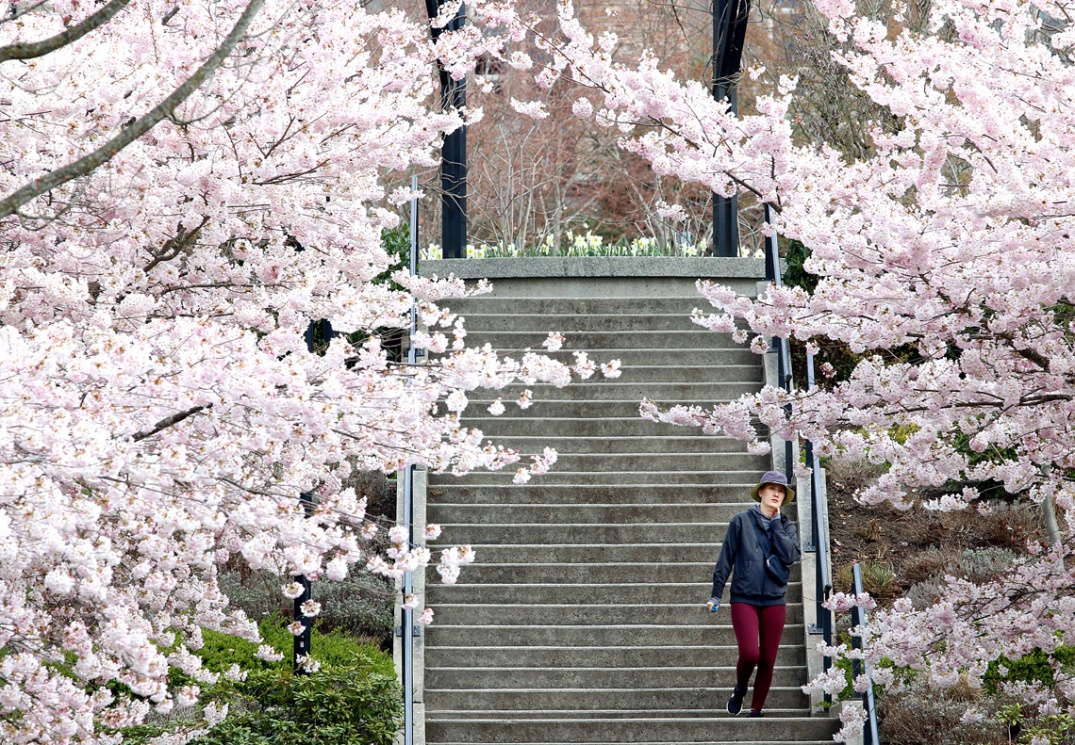This is part of a look back at pandemic stories I’ve written for The Tri-City News.
When Jessie Bahrey settles in to her Port Moody apartment to catch up on the nightly news, she’s not noting the latest federal assistance program being announced by Prime Minister Justin Trudeau, or MSNBC correspondent John Heilemann’s analysis of the American response to the COVID-19 pandemic.
She’s looking for the succulent that would add a pop of colour to the bookshelves behind Trudeau’s head or what fruit Heilemann has ripening in the bowl on his kitchen counter.
Bahrey, along with her Washington, D.C.-based partner, Claude Taylor, have become the pre-eminent Twitter authorities on what’s going on behind TV journalists, politicians, pundits and even a few scattered celebrities as they’re being interviewed from home or office on virtual platforms like Skype and Zoom.
For the office manager at Muldoon Greenhouses in Port Coquitlam, her newfound avocation started as a bit of a lark between the long-distance couple. But in just three weeks, their Room Rater Twitter account, @ratemyskyperoom, has grown to more than 133,000 followers, some of them the very targets of their sharp eyes and gentle humour.
“Everybody was talking about them but not doing the rating,” Bahrey said of their background critiques. “This was supposed to be a fun little thing we did for giggles.”
Shifting each other off according to their respective time zones and work schedules, the pair spend about 11 hours a day watching various American and Canadian news programs, taking screen grabs and dishing out their opinions. So far, they’ve posted more than 1,300 times. Neither has a background in interior design, although Bahrey admitted they’re both “news junkies.”
She said aside from the environs in which the interview is being conducted, they also pay attention to the lighting and camera angle.
Bahrey said it’s been illuminating to see how people used to working in controlled studios, where the lighting is perfect and backgrounds are designed to complement rather than distract, have adjusted to the more intimate and ad hoc settings of their homes.
Some, like former deputy prime minister John Manley, and New York Times correspondent Trip Gabriel, haven’t fared so well. Their low-angle perspectives that emphasize the blank walls and ceiling behind them make them look more like “hostage videos,” she said.
“Blink twice if we should call the police,” Bahrey wrote of Manley’s appearance.
Others show careful attention to detail.
Bahrey praised musician John Legend’s interview, conducted as he sat at his piano, a bookcase of Grammy awards to his left and the rest of his bright living room fading back into the distance.
“All the way back as far as you could see, it was just peaceful,” she said, adding the couple has purposely avoided doing too many celebrity critiques as they have the wealth and image self-awareness to ensure they have nice backgrounds.
Former First Ladies Michelle Obama and Hillary Clinton also got raves.
Some targets of Room Rater’s reviews have even reached out through direct messages for tips. MSNBC’s Heilemann gave them a heads up to watch the fruit bowl as it evolved through several on-air appearances then culminated with a guest appearance by his great dane.
Will Reeve, a reporter on ABC’s Good Morning America, reached out to rebut the couple’s criticism of his no-pants appearance on the morning news magazine program.
Bahrey said seeing so many prominent and important people in their home environment, with all the distractions that can come with it, has helped humanize them.
“The biggest thing is they are very much like us,” she said. “Just because they’re famous, doesn’t mean they don’t struggle with the same things we do.”

Bahrey said the project has been a fun distraction from watching all the doom and gloom of growing infection numbers and death rates.
“It breaks up the bad news cycle,” she said. “It gives us a sense of community, that we’re all in this together.”



